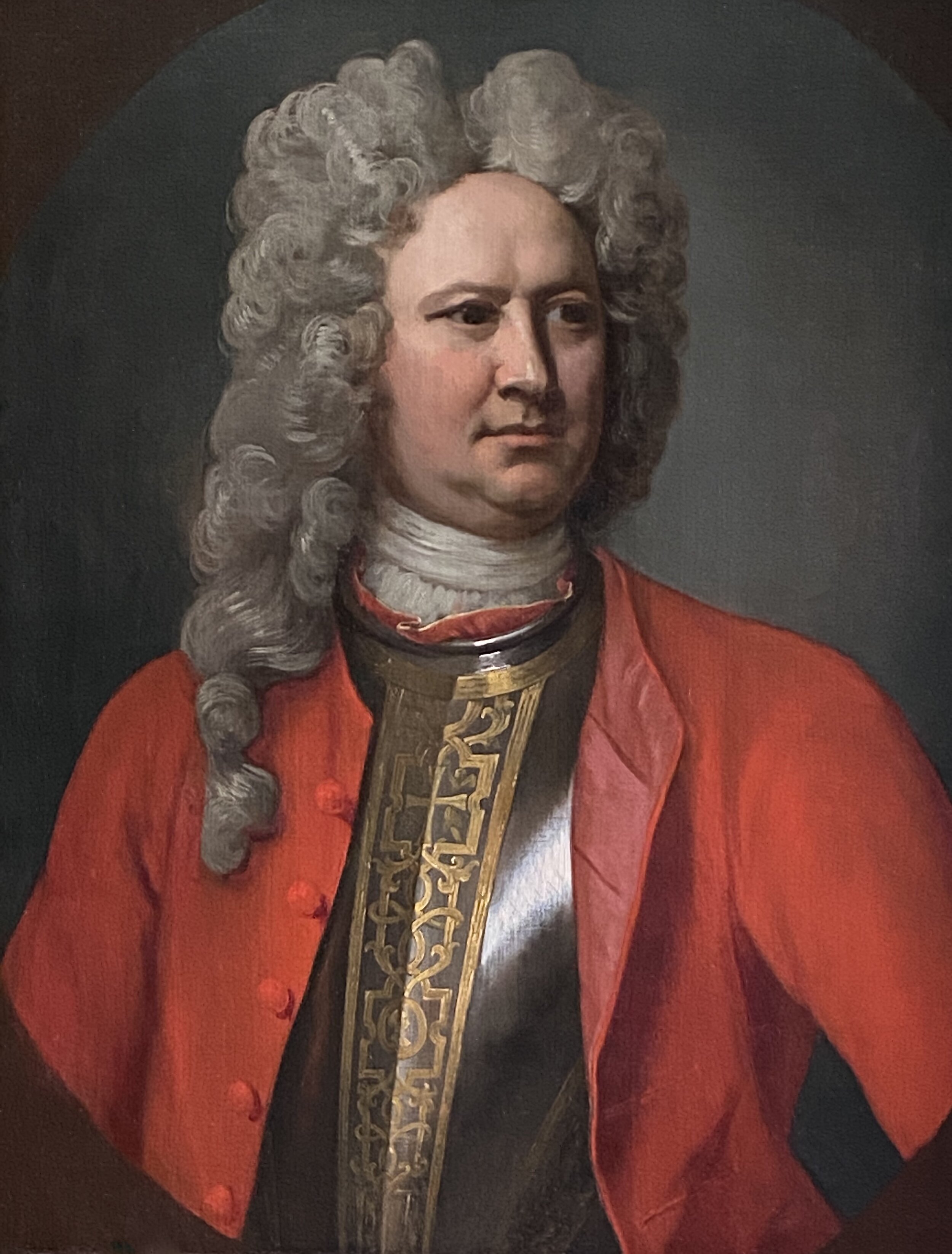
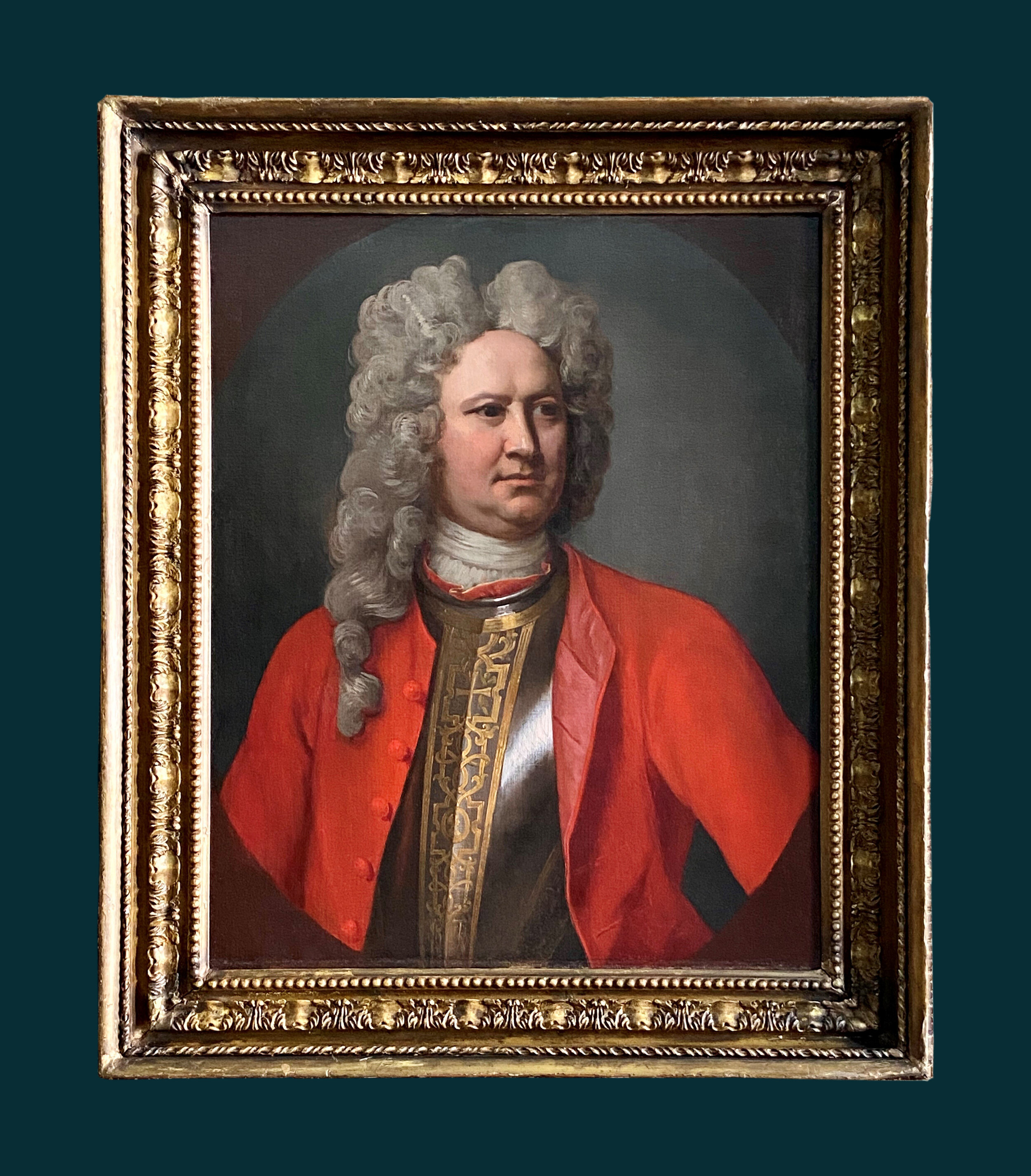
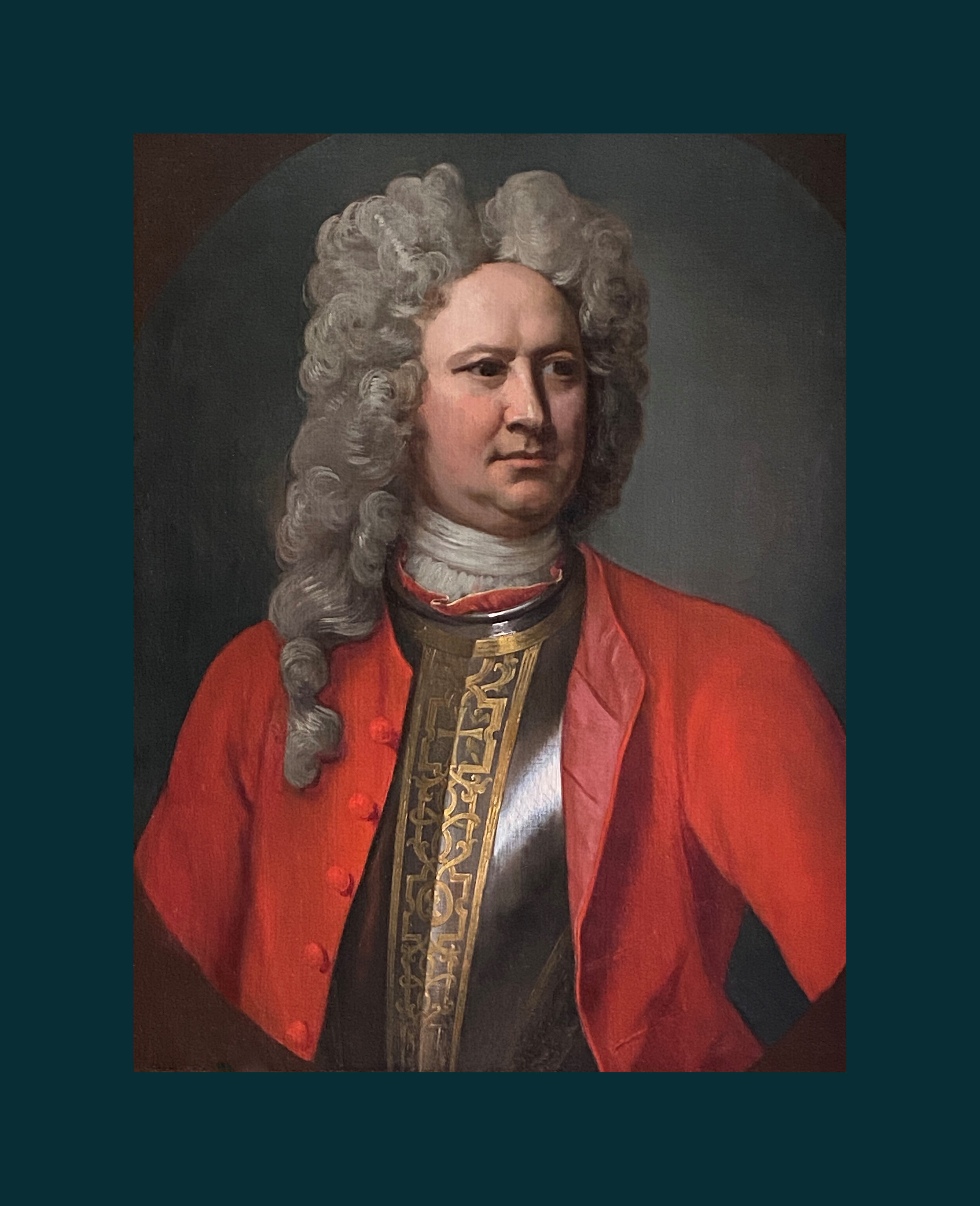
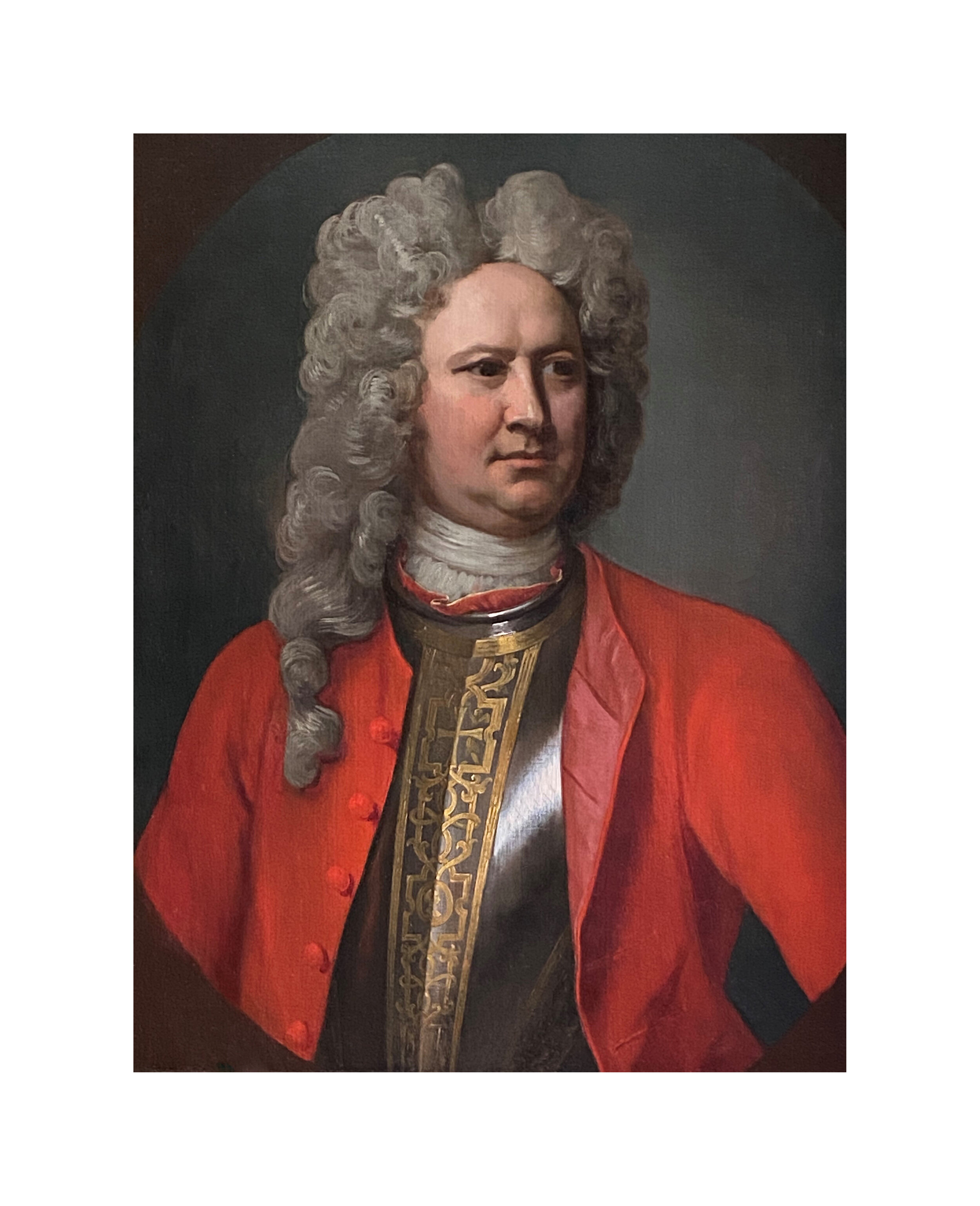
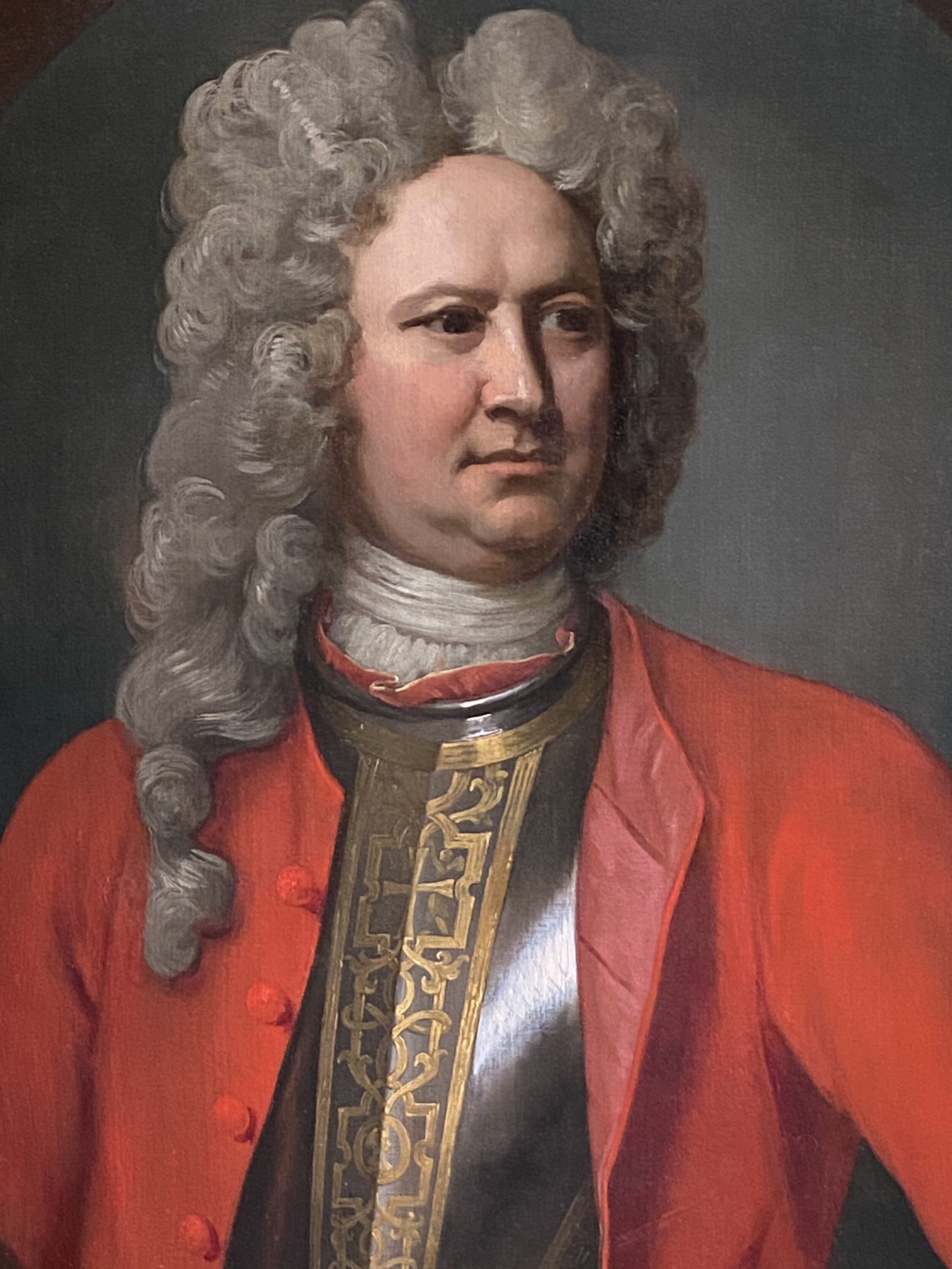
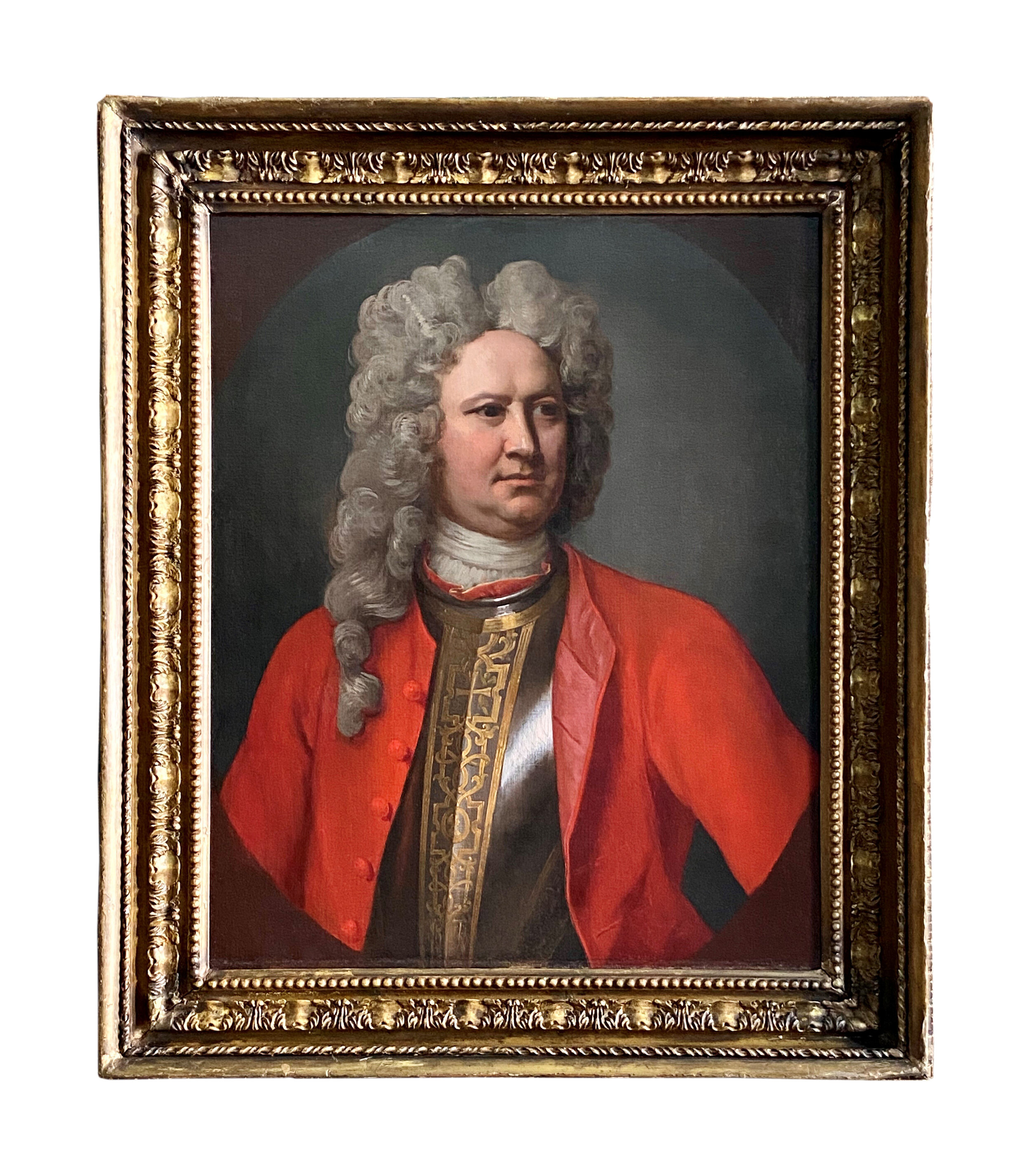
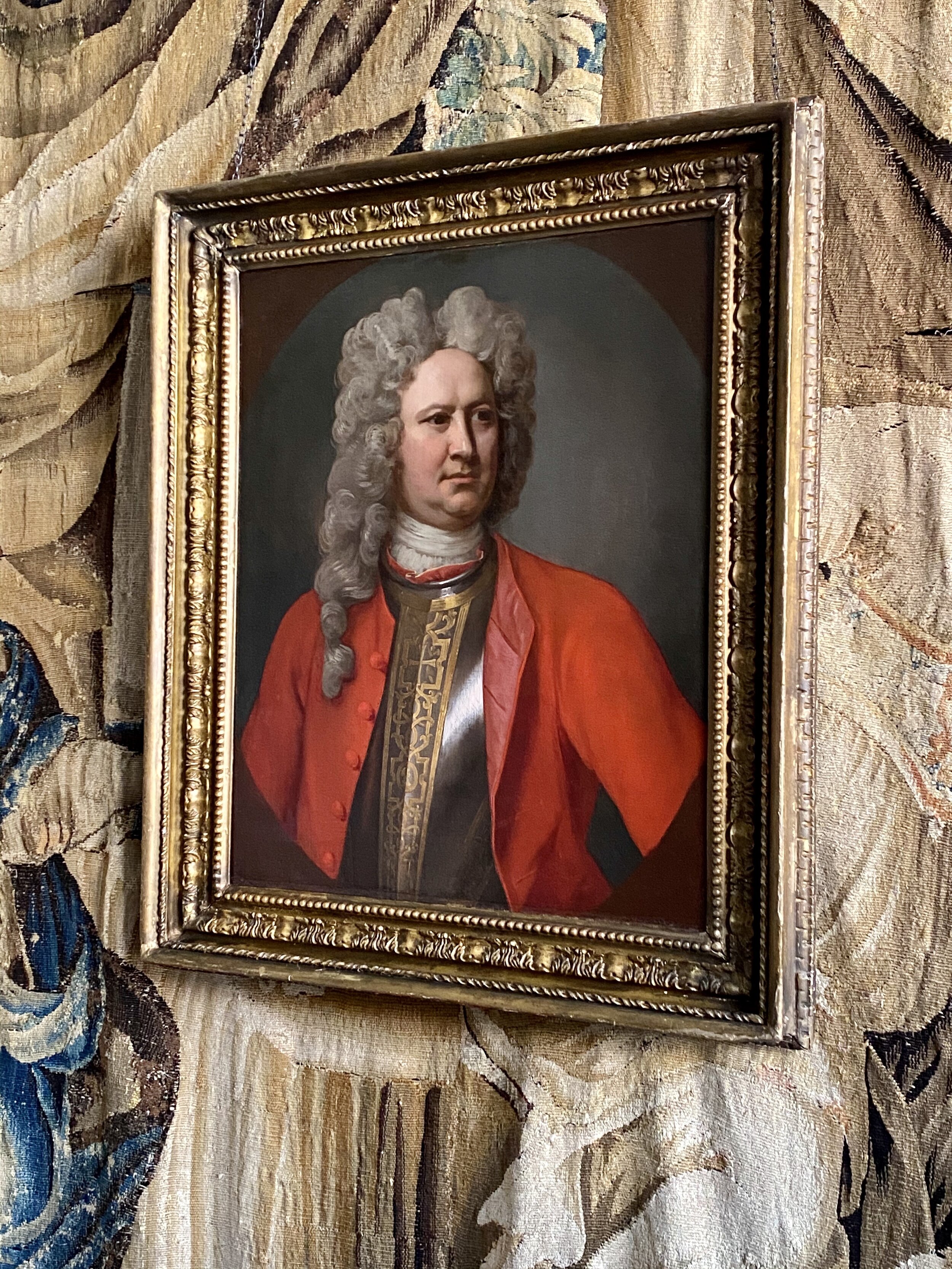
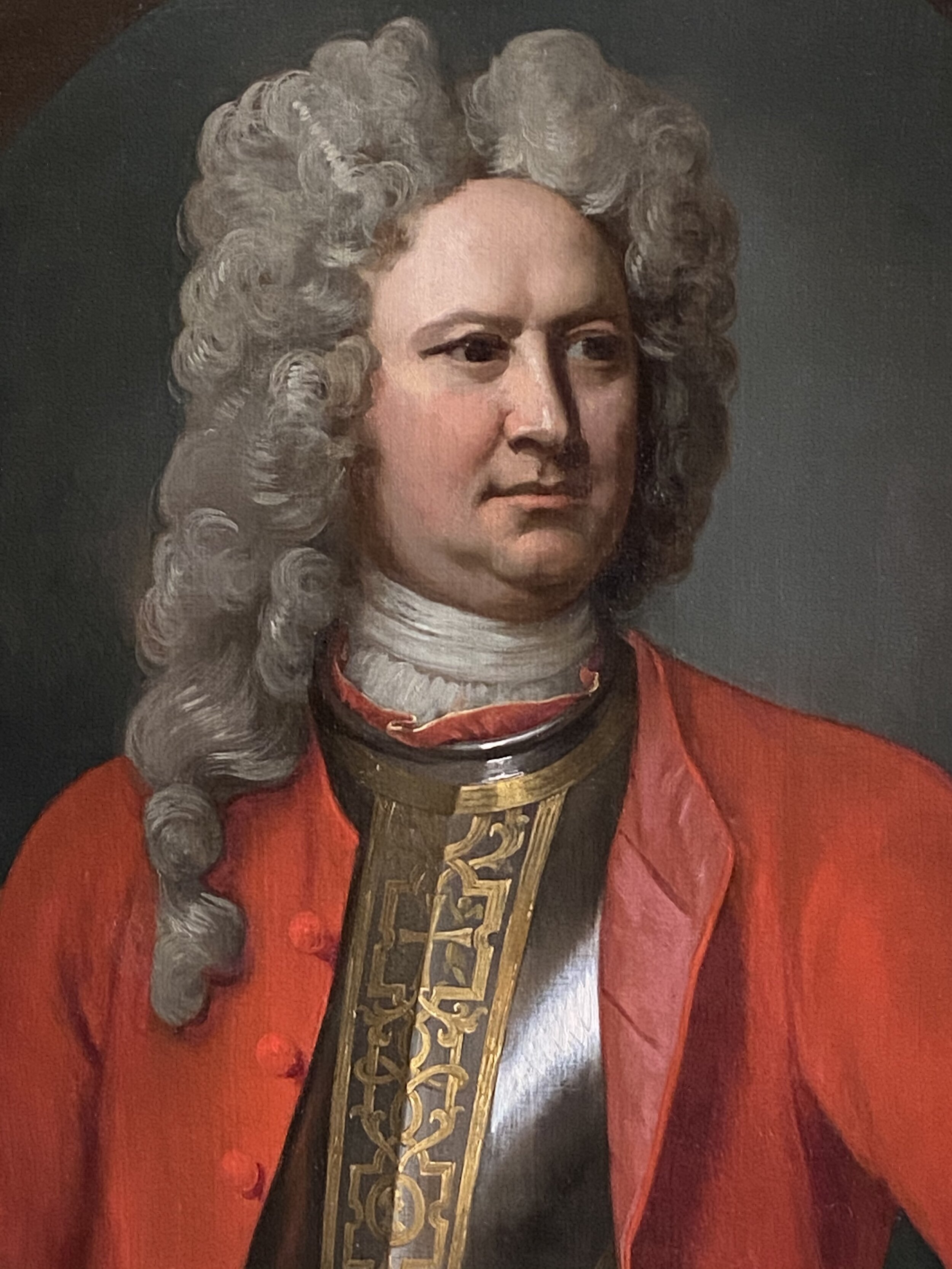
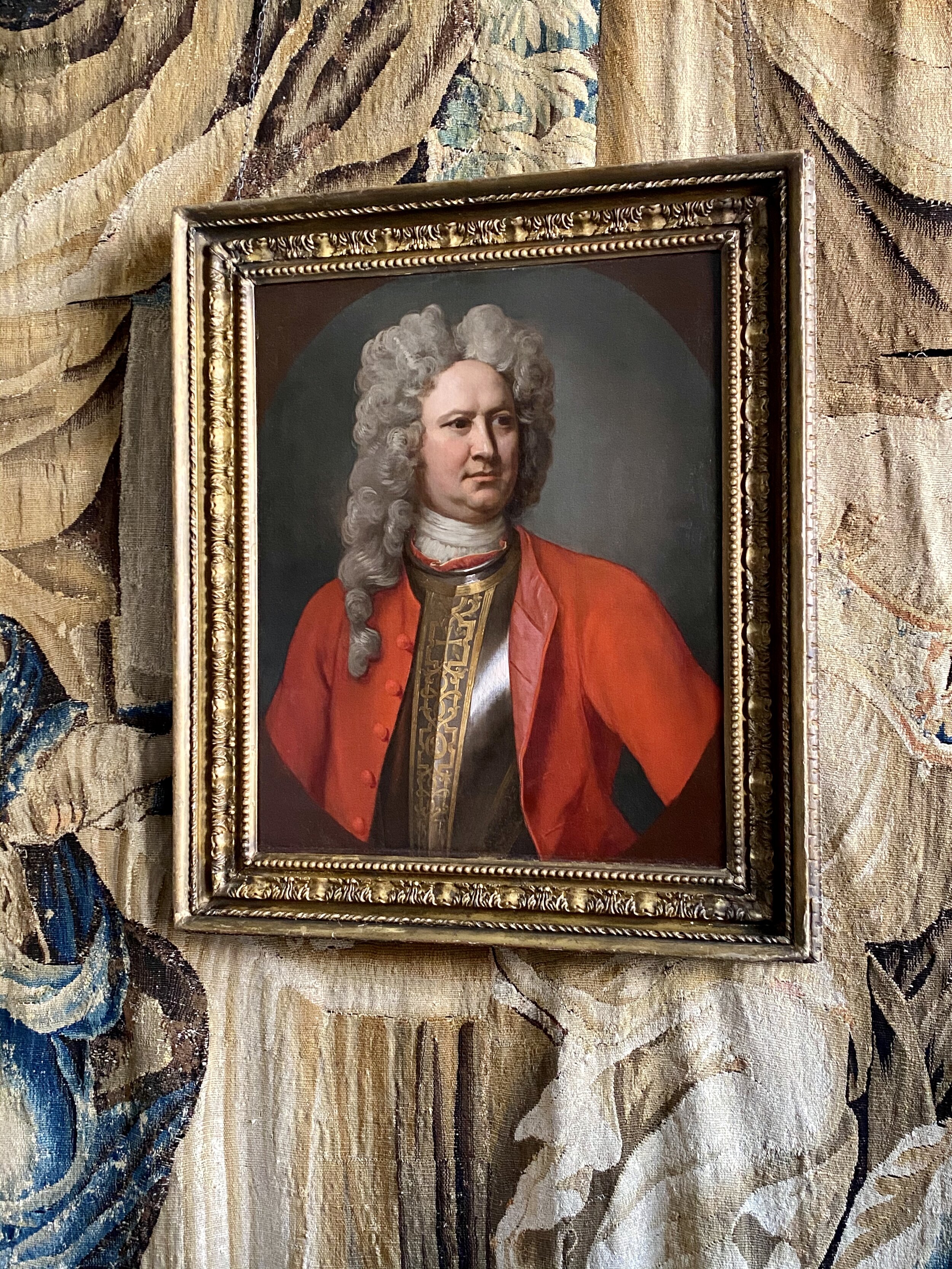
PORTRAIT OF AN OFFICER c.1715 - CIRCLE OF MICHAEL DAHL (1659 - 1743)
A fine 18th century English portrait of an officer which dates to around 1715, a period in British military history most often associated with the Wars of the Spanish succession. It depicts an as yet unknown member of the illustrious Penn family, who is painted within a feigned oval. He sports a tall powder wig and wears a significant breastplate underneath his fine red coat.
Recent conservation of this painting has revealed its high quality, and this is particularly noticeable in the colouring and modelling in the sitter’s face. The stark contrast between the powered greys of the wig and the dazzling scarlet frock coat helps to make this an eye catching image that demands attention. In contrast to French portraiture of this period, such British portraits contain an energy and directness that is rarely ever matched by contemporary examples from the continent.
One of the most interesting elements of the painting’s composition is the sitter’s dress. It is clear that the sitter is wearing the breast plate that was made of the Elizabethan solider Sir John Smythe (d.1607). Smythe’s armour, which survives at the Royal Armouries in Leeds, was made between 1580-90 and manufactured in one of the great centres of German armour, Augsburg. The gilded and etched decoration, containing mannerist interlocked strap work, is identical to that on the Smythe armour. Contained within the central cartouche of the strap work, and just visible in our painting, is a cross being supported by two winged angels. It is recorded that Smythe had gifted this very armour to King James I in 1607, hence why it entered the collection of the Royal Armouries. Although plate armour no longer served a practical purpose on the battlefield in the early eighteenth century, it is clear that patrons still wanted to evoke these ancient chivalric associations in their painted likenesses.
The arms and armour scholar Sir James Mann had published an article in The Connoisseur in 1932 (Vol. 90, no. 373) drawing attention to this very subject. Mann had noticed that several portraits made in the opening decades of the eighteenth century featured sitters clearly wearing the breast plate of the John Smythe armour. He suggested that it is very likely that armours were lent from the Royal Armouries, then kept in the Tower of London, to painters and theatrical companies for props. It is possible that the particularly highly preserved gilding on the Smythe armour would have been attractive to aesthetically minded artists. He referenced that in 1727 the actor Colley Cibber borrowed an armour from the tower for a production of Henry VIII. Indeed, historic armours were even lent for special state occasions, including for the Lord Mayor’s Show and coronations. The John Symthe armour had been used for the King’s Champion at the Coronation of George II in 1727.
Most aptly, and relevant for our note, is that the Symthe armour bears the motto ‘FUTURA PRAETERITIS’, meaning understanding the future by the past. The two artists that Mann highlighted as using this armour in their portraiture was Michael Dahl and Johan van Diest. Through thorough study in the Witt Library, Mann had not found the armour in any portraits by their contemporaries Godfrey Kneller or William Aikman. Firstly, Dahl had painted the solider Richard Beaumont of Whitley Beauchamp in the harness, which remains the most faithful and full depiction of the armour. This also seems to be the same suit worn by James Butler, 2nd Duke of Ormonde, painted by Dahl’s studio in c.1713 and now in the National Portrait Gallery, London.
It is highly likely that our portrait was completed by an artist in the circle of Dahl, this is particularly evident in the face pattern seen in this officer. The rapidly painted curls and locks of the officer’s wig, and the highly skilled smooth modelling of the sitter’s face and features, are particularly well preserved.
Secondly, the armour appears in the works of the Dutch born artist Johan van Diest (1695-1757). Two surviving paintings in the National Portrait Gallery, attributed to van Diest, shows both sitters sporting the very same breast plate. They depict the 1st Earl Stanhope and George Wade. Both men had made their mark as soldiers, with Stanhope playing a pivotal role in the Wars of the Spanish Succession and Wade likewise alongside becoming Commander of the British Forces in Ireland in 1714. One might imagine that this brilliant breast armour was sought out to elevate the militaristic achievements of these two gentlemen. Other sitters identified as having been painted in the armour are the 6th Earl of Strathmore and Colonel James Gardiner. Whoever our gentleman was, it is likely that he was of an equally high calibre as the aforementioned figures.
Mann had noticed that the quality of the depiction of the armour was not consistent between both artists. It seems that van Diest may have been making use of drawings or secondary source material, rather than having the breast plate in front of him for each sitter. This further raises interesting questions as to how these paintings were produced in the studio. As was the practise with nearly all portrait painters, heads would often be painted first with costumes and bodies being added later with the assistance of drawings, prepared studies or manakins.
This portrait is offered in an excellent state of conservation and is ready to hang in a period carved and gilded Carlo Maratta style frame which compliments and enriches the tones of this fine eighteenth century portrait.
Research into the sitter is ongoing.
Higher resolution images on request. Worldwide shipping available.
Canvas: 25” x 30" / 64cm x 76cm. Frame: 31.5” x 38" / 80cm x 97cm.
Internal Ref: 00125
Price: £7950

